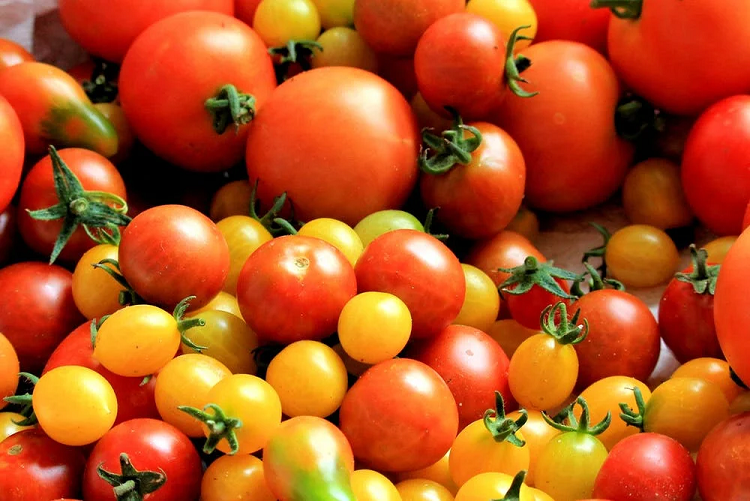Nutritional strategies are essential for lifelong prostate health. Nutrition and exercise are valuable tools in the prevention and management of prostate disorders.
Prostate cancer is the most common form of cancer in men. Thousands of men are diagnosed with prostate cancer each year. Predisposing genetic factors exist in prostate health but dietary choices lower or raise your risk of acquiring life-altering prostate conditions.
Anatomy: The prostate is a walnut sized gland with two lobes enclosed by an outer covering. Part of the male reproductive system, the prostate functions to produce a fluid that protects and enriches sperm. The prostate is located in front of the rectum and directly below the bladder.
The urethra, a tube from the bladder to the penis, travels through the prostate gland. Enlargement of the prostate compresses the urethra and leads to incomplete voiding of the bladder. This frustrating symptom is often the first noticeable sign of prostate inflammation.
Poor Nutrition: The standard American diet (SAD) is excessive in calories, inflammation promoting foods and simple sugars. The diet of most American males is deficient in fruits, vegetables and anti-inflammatory foods. Evidence is showing that this type of diet turns on genes in the prostate that make the cells more likely to become inflamed and cancerous. The combination of poor diet and limited exercise increases the risk of prostate cancer, benign prostate hypertrophy and chronic systemic inflammation.
Proper Nutrition: Eat your way to better health by modifying the standard American diet. Simple nutritional changes reap lifelong positive health benefits. Proper nutrition and consistent exercise are powerful weapons against prostate disorders.
Oxidation and inflammation are necessary ingredients in the development of prostate cancer. Diet plays a key role in limiting the damaging effect of oxidation and inflammation.
Inflammation: Inflammation is a defense mechanism to fight infection and injury. Systemic and chronic inflammation leads to disease. Prostate inflammation leads to symptoms and/or cancer.
Anti-inflammatory Foods: Nutrition is the best tool for reducing inflammation. Our bodies release anti-inflammatory and pro-inflammatory chemicals in response to the foods we consume.
Ocean caught fish are protein rich foods that result in the production of anti-inflammatory chemicals. Albacore tuna, salmon and mackerel are good choices. Decrease inflammation levels by consuming these anti-inflammatory protein sources two to three times a week.
Choose game meats over domestic meats. Bison, elk, venison and rabbit supply quality protein and are lower in adipose fat than domestic meats. Search for free-range, hormone-free, and steroid-free sources of protein. These additives increase the inflammatory response and should be avoided at all costs.
Charred meats can trigger prostate inflammation. The overcooking of meats and chicken at high temperatures produces carcinogens shown to elicit cancer in animal studies. When preparing chicken always remove the skin before cooking. If not removed beforehand the skin’s fat soaks into the meat.
Decrease disease-producing inflammation by increasing your consumption of anti-inflammatory foods and preparing your food properly. Promote prostate health by eating high protein, low fat sources of anti-inflammatory foods.
Antioxidants: Oxidation produces disease. Oxidants or free radicals can damage body cells. Antioxidants render disease producing free radicals harmless. The best defense against oxidation is your dietary strategies.
Consume high quantities of numerous fruits and vegetables to acquire the necessary antioxidants. Consume nine servings daily. Each serving should be equal to 100 grams or one cup.
Variety is as important as quantity when choosing fruits and vegetables. For the best cancer fighting results eat a wide array of fruits and vegetables. Most fruits and vegetables are nutrients dense. They provide a large amount of vitamins and minerals within minimal calories.
Brightly colored fruits and vegetables possess antioxidants and phytonutrients that neutralize free radicals. Red colored foods containing the antioxidant lycopene are proven to benefit the prostate gland. Consuming tomatoes, pink grapefruit and watermelon increases intake of lycopene.
A combination of your daily dietary strategies and exercise are your best defense against prostate disorders. Increase the health of your prostate gland by consuming healthy foods that decrease disease causing inflammation and oxidation.
Dr Donald A Ozello DC of Championship Chiropractic in Las Vegas, NV
Web Site: http://www.championshipchiropractic.com/
Blog: https://www.championshipchiropractic.com/wordpress/
YouTube: https://www.youtube.com/user/drdozellodc/videos
Twitter: https://twitter.com/drdozellodc
Facebook: https://www.facebook.com/Championship-Chiropractic-280141628688300/
LinkedIn: https://www.linkedin.com/in/dr-donald-a-ozello-dc-716b3233
“Running: Maximize Performance & Minimize Injuries” https://www.amazon.com/Running-Performance-Chiropractors-Minimizing-Potential/dp/1493618741
**Disclaimer: Always consult a medical professional before beginning an exercise program. Always work within your capabilities. Never perform an exercise that elicits or increases pain or symptoms. Reading this article and viewing the linked videos does not take the place of seeing a medical professional. Please visit a medical professional for evaluation, diagnosis & treatment.

